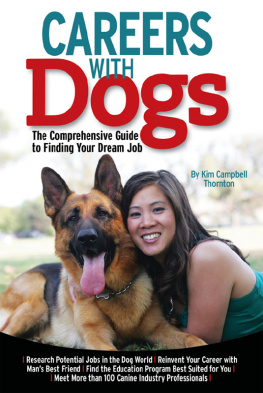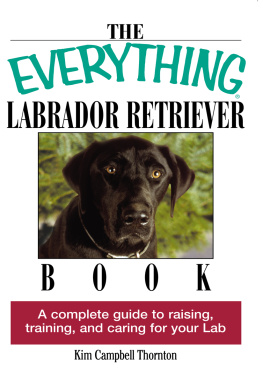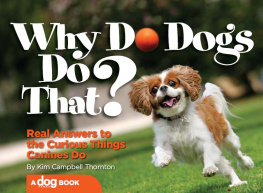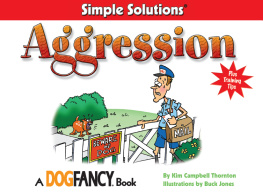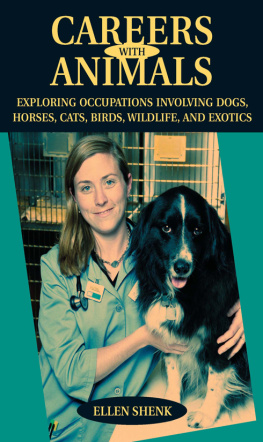
M any thanks to Virginia Parker Guidry and Christie Keith for their contributions to the text and to the many sources who made this book what it is: Lois Abrams, PhD; Lowell Ackerman, DVM; Terry Albert; Kat Albrecht; Jennifer Armbruster; Rich Avanzino; Mike Bannasch; Tony Basher, DVM; Ericka Basile; Francis Battista; Richard Beauchamp; Marty Becker, DVM; Pam Becker; John Berg, DVM; Steven Biller; Alysa Binder; Stephanie Blank; Mary Bloom; Mara Bovsun; Sue Bulanda; Linda M. Campbell; Betty J. Carmack; Stella Clary; Richard Crook; Terry Curtis, DVM; Pamela Dennison; Dennis Dolan; Dee Dee Drake; Amanda Eick-Miller; Kate Eldredge; Katherine Feldman, DVM; Nancy Fierer; Jean Fogle; David Frei; Ava Frick, DVM; Lea-Ann Germinder; Bill Given; Randi Golub; Chris Grisell; Carol Gurney; John Hamil, DVM; Amie Lamoreaux Hesbach; Heather Houlahan; Heidi Jeter; Alicia Karas, DVM; John Kerwick; Peter Kraatz; Amy Kramer; Charlene LaBelle; Marion Lane; Julie Levy, DVM; Lynn Lloyd; Cheryl Lopate, DVM; Fred J. Lyman; Laurie McCauley, DVM; Patricia McConnell; Susan McCullough; Barbara Jedda McNab; Jason Merrihew; Shawn Messonnier, DVM; Jane Miller; Sarah Miller, DVM; Dale Moone; Arden Moore; Jim Nash; Joanne Nash; Robert Newman; Pam Nichols, DVM; Glenye Cain Oakford; Nina Ottosson; John C. Pearce; Sally Perea, DVM; Lucy Postins; Susan Rhoades; Jill Richardson, DVM; Susie Roof; Elizabeth Rozanski, DVM; Sonya Ryan; Marta Sanchez, DVM; William Secord; Monica Segal; Bianca Shaw, DVM; Julie K. Shaw; John Sherman, DVM; Amy Shojai; Doyle L. Shugart; Nicole Sipe; Martha Smith, DVM; Gina Spadafori; Jaynie Spector; Janet Steiss, DVM; Rubi Sullivan; Nathan Sutter, PhD; John Tegzes, VMD; Sari Brewster Tietjen; Elizabeth Tobey; Kim Toepfer; Betsy Uhl, DVM; Susan Wagner, DVM; Chris Walkowicz; Lindsay Warren; Judy Welch, PsyD; Barbara Williamson; John Wright, CAAB; and the many other people whose stories inspired me.
Many thanks as well to Tamela Klisura for her insights on opening a retail store and to my very fine editors who did a wonderful job of taming and improving the unruly manuscript: Jarelle Stein, Amy Deputato, and Andrew DePrisco. And finally to my husband, Jerry, and my dogs, Bella, Twyla, and Harper, for patiently living through the writing of another book.
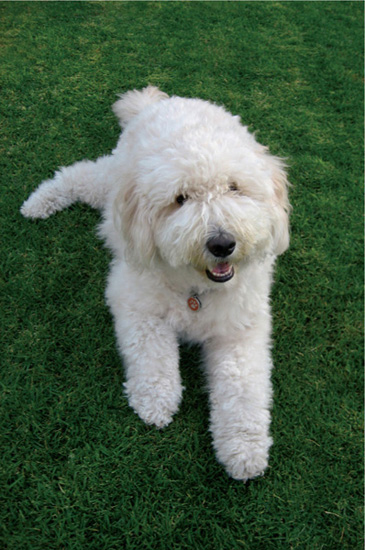

The Pet Industry in America
T he rise of the pet industry started in the 1960s, when dogs and cats began making their way into our hearts as more than mere animals on whom we spent only what we had to. Signs of this cultural change included the advent of mass-merchandised convenience foods and premium diets for animals, the introduction of more advanced training techniques, and the emergence of publications dedicated to pets and their care. Pet-related companies that got their start in the 1960s were at the forefront of what would become a multibillion-dollar industry.
Today, the pet industry encompasses food, veterinary care, supplies, nonprescription medications, and pet services such as grooming and boarding. Researchers estimate that pet owners spent $45.4 billion on their animals in 2009, up from $43.2 billion in 2008 and $17 billion in 1994. All this recent spending occurred during one of the biggest recessions this country has ever seen. According to the U.S. Census Bureau, the pet industry is now the seventh-largest retail segment in the country, ahead of the toy industry and the candy industry. Pet-supply sales are increasing5 to 7 percent annuallywhile sales of baby supplies are decreasing.
Whats Fueling the Growth?
Whats fueling the explosion in the buying of pet services and products among consumers? Several factors, including the time constraints that are experienced by two-income families, more disposable income among empty nesters and childless couples, and a desire for high-tech and high-end products and better animal health care.


At the PetSmart grooming salon in Woodhaven, Michigan, Emily Meadows bathes a customer. Grooming and other pet services are in high demand among dog owners.
Less Time, More Disposable Income
Baby boomers with empty nests and young married professionals with no kids and lots of disposable income drive the spending on pets. Dual-career couples have a two-pronged motivation for their pet-spending habits.
First, purchasing treats, toys, or other special items for their animals brings the owners pleasure. Second, many of them work long hours and are not able to spend as much time with their pets as they would like, so they pay other professionalssuch as pet sitters and dog walkersto ensure that their animals get the necessary exercise and companionship. Dog owners also spend their money on services such as grooming, boarding, massage, and yoga.
High-Tech Gadgets and High-End Products
Thanks to pet owners interest in and concern for the well-being of their animals, products for companion animals now extend far beyond traditional necessities. Among the high-tech items for pets are computerized ID tags, GPS tracking devices for lost pets, and programmable feeding and drinking systems. High-end pet supplies include decorator daybeds and designer collars and clothing by such companies as Coach and Burberry. Companies known for catering to peoplePaul Mitchell, Omaha Steaks, Origins, Harley-Davidson, and Old Navy, for instancealso offer lines of pet products that include shampoo, treats, clothing, and toys.
These brands dont slap their names on just anything. The Omaha Steaks Steak Treats for Dogs and Cats, which resemble the beef jerky the company produces for people, are made from the same premium Midwestern beef as the human version, minus the high levels of sodium and certain spices that might not agree with a dogs or cats digestive system. The John Paul Pet company, which was created by the cofounder of the Paul Mitchell line of hair-care products, tests its shampoos and conditioners on people first to ensure that they wont irritate the sensitive skin of pets. Harley-Davidsons pet collection includes denim and leather jackets, riding goggles, bandanas, and spiked leather collars for dogs who ride shotgun in a sidecar or a motorcycle dog carrier.

A canine biker sports a Harley-Davison jacket and cap. People are clamoring for high-end brand-name pet apparel.
The most stylish petsor at least the ones with the most stuffhave carryalls for their paraphernalia, which can include a blanket, a folding water dish, a water bottle, and poop-pickup bags. Coat wipes and air fresheners keep pets and cars (as well as homes) smelling clean. Some automobile manufacturers even design optional dog-safety features for their cars and SUVs. Car harnesses, seatbelts, and car seats for dogs have proliferated.

